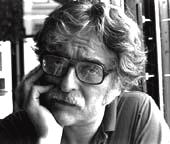Two months ago I wrote a column about the advantages of digital cameras over film cameras for photojournalism. At that point, I promised to also write a column on the advantages of film over digital. My friends who prefer film to digital range from ones who shoot locally for relatively small newspapers to ones who jump from world hot spot to world hot spot. Somewhere in that spectrum there should be an intelligent perspective on the advantages of film. The most intelligent (and reserved) comment I heard was, "I've shot both; I like film best." Far more typical was a thirty minute diatribe which linked digital photography to pond scum, the downfall of civilization and the destruction of innocence. It was then that I realized I was dealing with more than technical issues of image quality, e.t.c.. I was really looking at two different ways of shooting. And, it almost seemed, the better the photographer, the more he had found out what he like to do and did well with photography - the less likely he was interested in changing his working technique. To me, that makes sense. Photography is really about what is in front of the camera, not the camera itself. When your goal is to cross the river, it's pretty understandable that you don't want to change horses in midstream. To me, the most important part of a camera is the viewfinder. That's the big difference between a rangefinder, an SLR and a view camera and the source of the difference in the way we use those cameras. And it's the viewfinder of the digital camera that is the heart of its unique qualities. It's the only viewfinder where you can look at the picture you just took. It's sort of an instant and irresistable proof print. Suddenly, instead of concentrating on the subject and what is about to happen, you're concentrating on your camera and what just happenned. Real good for product shots; not so good for news. Is this nit picking? Of course it is. You don't have to check your last image. It's not the law. But, can you resist the temptation? It's strange to watch a photographer watching his camera instead of the subject and announcing, "Now, that's the best shot." What if the best shot occurred while he was watching the camera? Is this nit picking? Of course it is. The way you use a specific camera is not the heart of journalism. But this is a column about nits, not great photography. Let me give you the nit that annoys me the most. If I use a professional grade digital camera suitable for a broad range of news photography, it's going to resemble and handle like a rather large 35mm SLR film camera. That makes sense. It is patterned after what is the most versatile and most popular camera among photojournalists. But what about the smaller rangefinder camera accurately focusing a high speed lens in dim light - and using a film with an effective speed of 3200? Where's the digital equivalent? Where's the deluxe point-and-push with a fixed focal-length lens that can deliver top technical quality in a camera that measures 4 x 2 1/4 x 1 inch and is unnoticed by the subject? I imagine the answer to these questions is "In the not very distant future." The future for photojournalism is digital. But you can't blame old dogs for loving old tricks - especially when that old trick is big, beautiful black-and-white print hanging on a gallery wall. © Bill Pierce |
|
|
Write a Letter
to the Editor |
